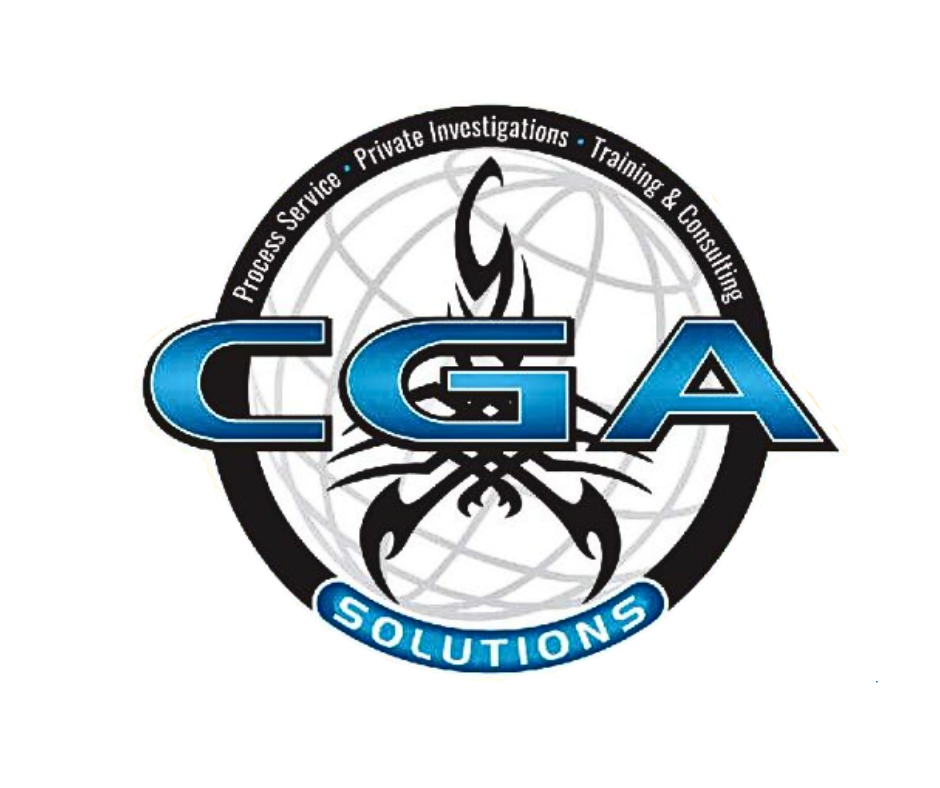The private investigation and legal industries have adopted powerful data-aggregation tools over the past decade. Platforms such as TLOxp, LexisNexis/Accurint, and Thomson Reuters CLEAR give investigators and attorneys the ability to pull hundreds of public- and proprietary-record fragments into a single interface in seconds. That speed and scale can be transformational: locate people, discover assets, pull court records, tie phone numbers to names, map relationships. But the same features that make these services irresistible also create real — and sometimes costly — risks when the information they return is treated as definitive fact instead of as leads that must be independently verified.
Below I explain why these data-broker reports are not fully reliable, drawing on language in the vendors’ own disclaimers and terms; the specific legal and ethical liabilities a private investigator (or attorney) can face when producing background reports that rely solely on broker data; and practical steps investigators and lawyers should take to reduce risk and preserve admissibility, credibility, and compliance.
Why These Reports Are Not Infallible — Even According to the Vendors Themselves
Data-broker products (TLOxp, Accurint/LexisNexis, CLEAR, etc.) aggregate billions of records from thousands of sources, combine and “resolve” identities algorithmically, and present a unified view to the user. That’s powerful — but it’s also a process with many failure points: mismatched identifiers, stale records, data-entry typos, name collisions (two different people sharing the same name), outdated criminal/court records, or mistaken linkages created by algorithms.
Crucially, the vendors explicitly warn users about these limits in their own legal materials:
- TransUnion’s TLOxp terms state that TLO does not warrant the accuracy, completeness, timeliness, or fitness for a particular purpose of TLO products and disclaims liability for errors and omissions. In short: the vendor says the product is provided “as is” and that subscribers “assume all risk and liability for verification, use, and misuse of the data.” (tloxp.tlo.com)
- LexisNexis’ Accurint services are expressly described as not being consumer reporting agencies and thus not consumer reports under the Fair Credit Reporting Act (FCRA); the vendor warns that Accurint should not be used as a consumer report for credit/insurance/employment eligibility decisions. That language signals both (a) a legal distinction and (b) vendor awareness that their product can’t be treated as an FCRA-style, fully verified consumer report. (Accurint)
- Thomson Reuters’ CLEAR materials and terms also include usage restrictions and disclaimers — for example, some CLEAR agreements specifically prohibit particular uses (such as certain types of background screening for employment) and warn that data is provided for internal business use without any opinion as to fitness or sufficiency. CLEAR’s documentation emphasizes that data availability and content differ by user authorization and that the service aggregates public and proprietary records that require interpretation. (Thomson Reuters)
Put bluntly – the companies that sell these tools tell you they are powerful aggregators of records and leads — not ironclad certifications of fact. Those disclaimers matter, because they affect both how the data can legally be used and the investigator’s downstream liability if inaccurate data is presented to clients, courts, or third parties as verified fact.
The Liability Landscape: What Can Go Wrong When Investigators Report Broker-only Findings
Relying exclusively on data-broker output — without verification — exposes investigators and their clients to several legal risks. Here are the most important ones to keep in mind:
1. FCRA and Regulatory Risk (When Reports Are Used For Employment/Credit/Insurance Purposes)
If background information is used in making employment or other covered decisions, the Fair Credit Reporting Act (FCRA) may apply. The FCRA places duties on “consumer reporting agencies” and users of consumer reports (employers, landlords, etc.), including disclosure, consent, accuracy procedures, and pre-adverse/adverse action notices. Many data-broker services expressly position some of their offerings as non-FCRA products — and warn clients not to use them for employment or other FCRA-covered eligibility decisions. An investigator who supplies an unverified broker report for an employment decision may inadvertently cause an employer-client to violate the FCRA (and expose themselves to legal claims). (Federal Trade Commission)
2. Defamation and Reputational Harm
Reporting an incorrect criminal record, an arrest that was never followed by conviction, or a mistakenly attributed address or phone number can cause significant reputational injury. If an investigator publishes or distributes false, damaging information about a person as fact, civil liability for defamation (or related torts) can follow. Vendors’ disclaimers do not shield an investigator from a defamation claim if the investigator themselves repeats or republishes inaccurate statements as verified facts.
3. Negligence or Malpractice Claims
An attorney who relies on unverified broker output in litigation or an investigator who provides a “background report” to a paying client that contains uncorroborated errors may face claims for negligence, breach of contract, or malpractice (in the case of attorneys). Courts and licensing boards expect investigators and lawyers to use competent methods — that includes verifying critical records before relying on them in reports or testimony.
4. Admissibility and Evidentiary Problems
Data-broker output is generally hearsay; the court may exclude or give little weight to report printouts unless properly authenticated and corroborated. Judges are skeptical of “black-box” aggregated reports that lack clear, traceable chain-of-custody or original-source documentation. An investigator who expects broker output to be treated like certified court records will often be disappointed.
5. Privacy and Improper Use
Many jurisdictions limit the use of certain records, and vendors often license data with usage restrictions (for example, CLEAR agreements that prohibit using their data for marketing or certain background checks). Misusing data for prohibited purposes can lead to contract breach, vendor sanctions, and local regulatory issues. (Thomson Reuters)
Why Independent Verification is Imperative (And What That Verification Should Actually Look Like)
Given those liabilities, the proper role of a broker report is usually lead generation: it points you to records or people you should check. Independent verification transforms a lead into admissible, defensible evidence. The vendors’ own terms insist on verification and warn that information “should not be relied upon as definitively accurate,” which is a useful reminder to base final conclusions and pleadings on primary sources.
Practical verification steps investigators and attorneys should follow:
- Obtain original-source documents whenever possible. Pull certified court records, clerk-stamped filings, certified property deeds, and other primary documents rather than relying on database summaries.
- Corroborate across independent sources. If an aggregator links a phone number to a name, try reverse lookups, contact records, utility bills, or witnesses. If a criminal record appears, get the court file or certified disposition.
- Check currency and sealing/expungement. Public records are often stale; some convictions or charges are sealed, expunged, or otherwise legally restricted. Don’t republish such records without checking the jurisdictional rules. (Regulatory guidance also limits how long certain adverse items can be used for employment decisions.) (Consumer Financial Protection Bureau)
- Document your verification process in your report. Include the primary documents, the dates accessed, the repositories, and any discrepancies uncovered. When something remains unverified, state that explicitly rather than implying certainty.
- Obtain client instructions and limit scope when necessary. If a client asks for a “background check,” clarify whether they intend to use the result for hiring, litigation, surveillance, or other purposes — and explain the limitations of broker reports and any FCRA implications.
- Comply with FCRA when applicable. If your client will use information for employment, credit, or insurance decisions, make sure an FCRA-compliant consumer report is used (and that your client follows the disclosure/consent and adverse-action requirements). The government and regulatory agencies have issued clear guidance about those steps. (Federal Trade Commission)
- Keep an audit trail and preserve chain-of-custody. Capture screenshots, export metadata, and retain original downloads and the vendor query logs. If you later need to show how you got a result or explain discrepancies, you’ll be prepared.
- Buy appropriate E&O and be mindful of licensing/ethical duties. Many investigators and firms mitigate risk with errors-and-omissions insurance and by following professional standards. Attorneys also have ethical duties to verify facts before submitting them to courts.
Practical Language to Include in Client Deliverables (And in Your Contract)
To reduce exposure, make your reports and contracts transparent about what was done and what was not. Consider clauses such as:
- “This report is compiled from [vendor name] database queries and publicly available records and is provided for investigative leads only. The investigator did not rely solely on database results; primary-source verification is required for any legal or employment decisions.”
- “Where source documents were obtained, they are attached. Where information could not be independently verified, that is noted.”
- A client acceptance/acknowledgment that they understand the limitations and will not use this report for FCRA-covered decisions unless an FCRA-compliant consumer report is separately ordered.
Transparency reduces the likelihood of misunderstandings that lead to litigation.
Bottom Line: Use the Databases — But Don’t Let Them Use You
TLOxp, Accurint, CLEAR, and similar services are indispensable investigative tools. They accelerate intake, reveal connections that would otherwise take days to assemble, and often make investigations feasible at all. But the companies that sell these services do not pretend the results are error-free or intended to replace primary-source verification — and the law treats raw aggregator output differently than certified or corroborated records. (tloxp.tlo.com)
If you’re a private investigator or an attorney: treat broker reports as what they are — powerful leads and indexing tools — and adopt procedures that turn those leads into verified, auditable facts before you report them to a client, submit them to a court, or allow a client to act on them in a way that could affect someone’s livelihood or liberty. Failing to do so invites defamation and negligence risk, regulatory exposure under statutes like the FCRA when applicable, and loss of professional credibility. The vendors’ disclaimers are not a legal umbrella for your practices — they are a reminder to verify.
At CGA Solutions, accuracy, integrity, and compliance are at the core of every investigation. Our licensed investigators combine verified intelligence with ethical investigative methods to deliver credible, defensible results for law firms, corporations, and private clients. Whether conducting background investigations, due diligence, or complex legal research, CGA Solutions ensures that every finding is validated—not just gathered. To learn more about our professional investigation and threat mitigation services, visit www.cga-solutions.com or call (866) 217-8581.
Selected References and Vendor Resources
TLO/TLOxp terms and security/terms-of-use — vendor terms disclaim warranty and emphasize verification. (tloxp.tlo.com)
LexisNexis / Accurint product pages and master terms — Accurint services described as non-FCRA; certain Accurint reports intended for specified uses. (Accurint)
Thomson Reuters CLEAR terms and policy materials — usage restrictions, prohibited uses, and source-transparency language. (Thomson Reuters)
Federal Trade Commission & CFPB guidance on FCRA and background checks — obligations when consumer reports are used for employment and other covered uses. (Federal Trade Commission)
U.S. Code — FCRA statutory language regarding permissible purposes (15 U.S.C. § 1681b). (Legal Information Institute)



